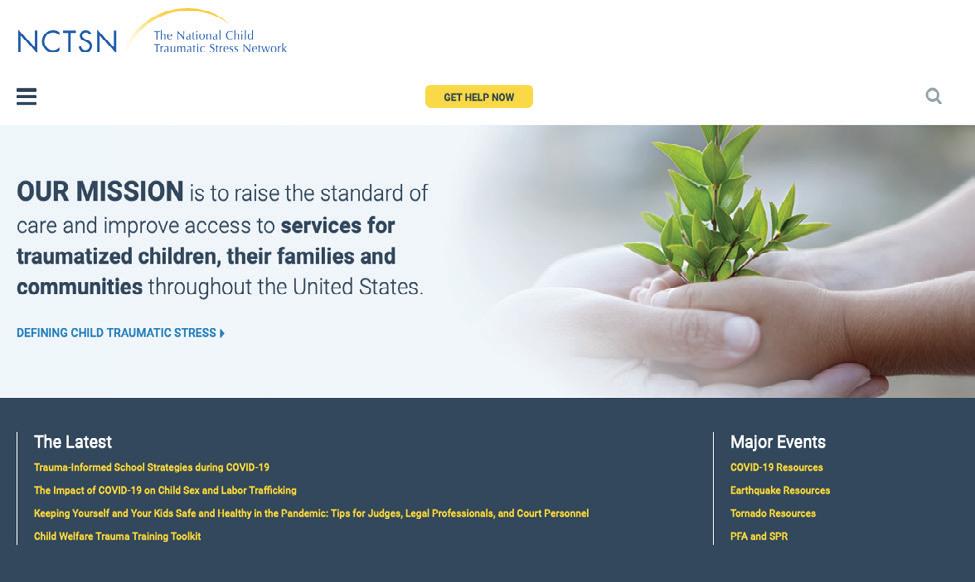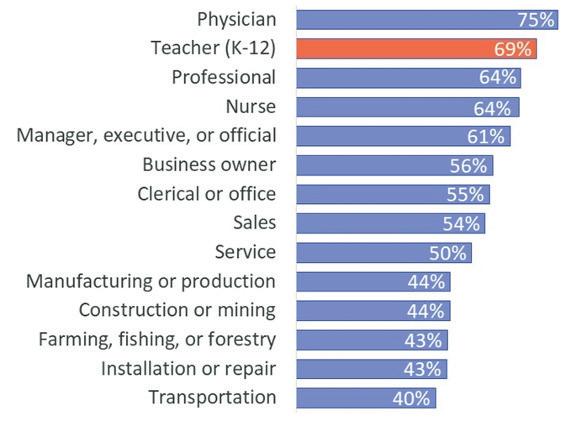Preparing for Your Future
How to Get Hired: Tips for Student Teachers Greg Dietz Assistant Superintendent for Human Resources (Interim), Argo Community High School District 217, Illinois
T
he key to landing your dream job is making yourself known to school districts. While many schools are searching far and wide to hire dedicated professionals, they cannot find you unless you take steps to make yourself known. The purpose of this article is to offer some practical advice to help you get noticed and get paid to do what you love- teaching students! Resume Your resume is usually the first source of information recruiters have about you. As a result, you need to craft a quality resume that is limited to no more than two pages. Include your student teaching assignment(s), practicum experiences, and any volunteer or paid work that illustrates your skills in working with children. Using action verbs will clearly communicate to recruiters and hiring managers what you did and how you did it. Cover Letter Many school districts’ applications require a cover letter. Consider creating a general template for your cover letter and customizing one paragraph for each school district by including something you learned about the district from their website. For example, “As a lifelong learner, I was excited to read about the instructional coaching program your district has spearheaded.” References and Letters of Recommendation Nearly all school districts will require you to upload two to three letters of recommendation and to list several references. Your references and letters of recommendation should come from professionals in the field who have worked with you and who have direct knowledge of your skills as a teacher. Cooperating teachers, field advisors, and professors are appropriate references for new education graduates. Searching for Openings The majority of school districts post job openings on their websites. You will want to monitor the websites of your favorite districts to search for current vacancies and apply for those that are of interest to you. You can also follow or connect with your favorite school districts on social media, since many districts advertise their job openings and job fairs on platforms like Twitter, Facebook, and Linkedin. In addition to district websites, there are other great online sources where you can search for teaching jobs. Consider visiting such sites as https://www.k12jobspot.com, https://www.schoolspring.com, https:// www.topschooljobs.org/, and https://www.teachers-teachers.com to review teaching opportunities as well. Online Applications Pre-service teachers are often so focused on their student teaching experiences that they can miss the deadline to apply for their dream job. A good rule of thumb for busy student teachers is to finalize the cover letter, resume, transcripts, and letters of recommendation prior to Spring Break. This break is an excellent time to search online job boards and district websites for job postings and to complete and submit online employment applications. When applying for jobs, answer all questions honestly and be sure to actually submit the application once it is completed. Regularly login to your online applications and “edit” them so that your application gets moved to the top of the list, since many application management systems display the most recent submissions first. Another suggestion is to submit your application as soon as possible even if you are waiting to receive letters of recommendation or transcripts. You can edit your application to upload these credentials when available.
12
Job Fair Attendance If your university hosts a teacher job fair make it a priority to attend. Bring multiple copies of your cover letter and resume and be prepared to answer questions about why you want to be a teacher, how you American Association for Employment in Education
differentiate instruction, the classroom management strategies you find most effective, and how you use technology as a tool for increasing student learning. Many universities offer mock interview sessions. Attend one of these sessions and have your interviewer track the number of times you say, “um”, “you know”, or “like” during your responses. You might be surprised by how often you use these distracting and empty fillers. Virtual Job and Networking Fairs Advancements in technology provide pre-service teachers with convenient and free ways to connect with school district recruiters from across the nation. Pre-scheduled chat room conversations with recruiters and video interviews allow student teachers to gain exposure to top-rated school districts without leaving campus! School districts often utilize online platforms to host virtual job fairs using the chat room concept. Typically, school districts must pay to participate in virtual job fairs, indicating that they are serious about filling their vacancies through connections made during these virtual fairs. Organizations like the Suburban Chicago Schools Virtual Networking Fair for Teachers (www.nwpaschools.org) and the Maine Township Schools Teacher Recruitment Consortium (www.teach4us.org) host websites that allow job seekers to create free video resumes that will be reviewed by administrators from multiple schools and districts. Since pre-service teachers’ resumes are lacking in practical teaching experience, it is vital that pre-service teachers impress recruiters with their engaging personalities, warm demeanors, enthusiasm, and energy. These “soft skills” are difficult to convey on a resume, but are readily apparent through videos. Interviewing for a Position Recruiters will reach out to learn more about you in various ways. Many school districts use telephone screeners that require you to respond to a series of questions over the phone. Give honest responses and always prioritize student needs. Also, be sure that your outgoing voicemail message is professional. An immature or inappropriate voicemail message could cost you an interview opportunity. Another way that school districts efficiently screen multiple applicants is through the use of video interviews. Often called “one-way” or “asynchronous” interviews, these pre-recorded video interviews allow candidates to record their answers to questions that are posed to them via a video recording. Often, a recruiter “asks” four to six interview questions, and the candidate has approximately three minutes to respond to each question. While they take some getting used to, oneway video interviews are convenient for both the employer and the job seeker. If you are fortunate enough to be selected for an interview, regardless of the format, be sure to research the school district. Weave information about specific programs, awards, or ongoing district initiatives into your interview responses. District websites are excellent sources of information about the district’s mission, key initiatives, and specialized programs. Arrive at the interview site early and greet the receptionist kindly. Demonstrate your love of students and your commitment to helping all students learn and grow. Avoid asking questions about salary, benefits, and other perks of the job, as these topics can make you appear self-centered, not student-centered. No matter where you are hired, as a teacher, you will be responsible for shaping the lives of many students, and your impact will last a lifetime. Make that impact a positive one for students!































